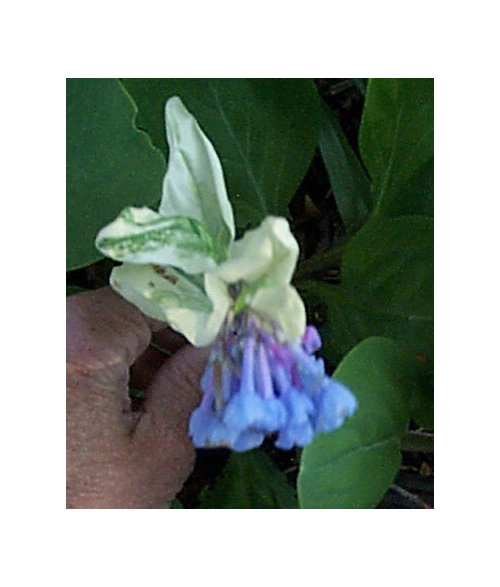oxymoron? Albino-leaf Virginia Bluebell
esteinberg
18 years ago
I have naturalized Virginia bluebells, but one plant is an odd-ball (see scan). It is varigated, with some of the leaves being totally white. It has come up like this for 2 years. It is healthy, but, as expected, the white leaves are extremely sun-sensitive.
Is this leaf-color/pattern a disease? Is this some sort of mutation? I have been unable to discover whether such varigation is common or something I need to worry about. Thanks, Ellen
Here is a link that might be useful:


fairy_toadmother
jim_dandy
Related Professionals
Reading Landscape Architects & Landscape Designers · Windham Landscape Architects & Landscape Designers · Cottonwood Landscape Architects & Landscape Designers · Surprise Landscape Contractors · Fuquay-Varina Landscape Contractors · Vineyard Landscape Contractors · Yukon Landscape Contractors · East Norriton Landscape Contractors · Fallbrook Fence Contractors · Hull Fence Contractors · Lady Lake Fence Contractors · Northbrook Fence Contractors · Sandy Fence Contractors · Santa Maria Fence Contractors · Lebanon Siding & Exteriorsfairy_toadmother
esteinbergOriginal Author
hoe_hoe_hoe
winged_mammal
hoe_hoe_hoe
kimka
hoe_hoe_hoe